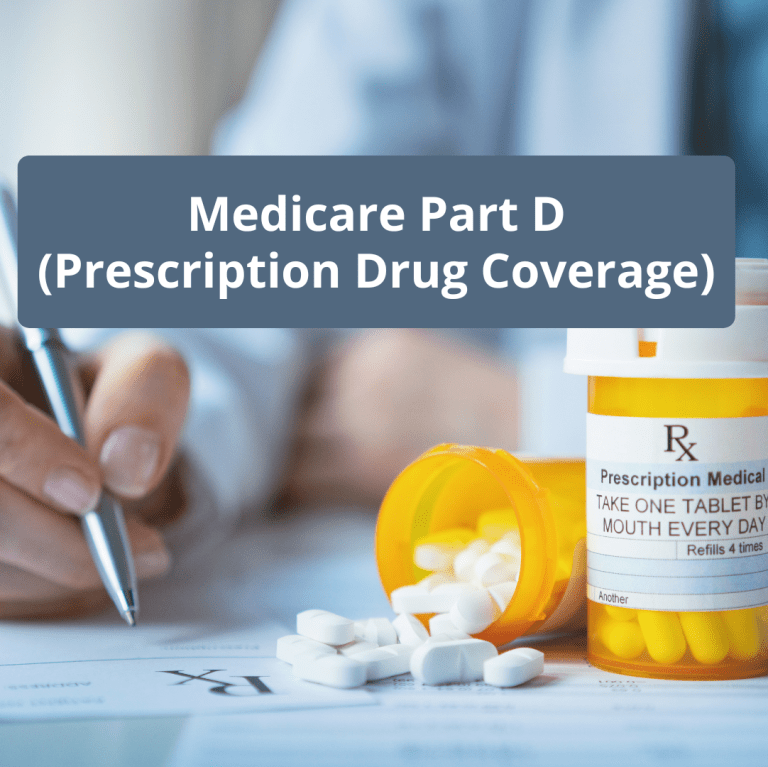Key Takeaways
-
Medicare Advantage and Medigap serve different needs: Medicare Advantage combines services into one plan, while Medigap supplements Original Medicare by covering out-of-pocket costs.
-
Choosing between them depends on your healthcare needs, budget, and flexibility preferences for 2025.
Understanding the Basics: Medicare Advantage vs. Medigap
When you’re looking for a Medicare plan that works for your lifestyle, budget, and healthcare needs, the choice often comes down to Medicare Advantage and Medigap. Both options provide valuable coverage but do so in different ways, making it essential to understand what each offers before you decide.
Medicare Advantage, often called Part C, combines hospital (Part A) and medical (Part B) coverage into one plan. Many plans also include prescription drug coverage (Part D) and sometimes additional benefits like dental, vision, and hearing.
Medigap, on the other hand, works alongside Original Medicare (Parts A and B). It doesn’t replace your Medicare coverage but fills in the gaps, helping pay for out-of-pocket costs like deductibles, coinsurance, and copayments. With Medigap, you typically need a separate Part D plan for prescription drug coverage.
Choosing between these options in 2025 will come down to your personal preferences, healthcare priorities, and budget. So, let’s dive deeper into the features, pros, and cons of each.
What to Expect from Medicare Advantage in 2025
Medicare Advantage plans continue to evolve, offering a variety of features that appeal to those who want all-in-one convenience. Here’s what you need to know about Medicare Advantage going into 2025:
Comprehensive Coverage with Additional Benefits
One major draw of Medicare Advantage plans is the inclusion of extra benefits not typically covered under Original Medicare. These may include:
-
Routine dental, vision, and hearing care
-
Fitness programs and wellness services
-
Transportation to medical appointments
These additional benefits can be appealing if you need broader coverage beyond hospital and doctor visits. However, it’s important to note that these perks vary depending on the specific plan and provider.
Network Restrictions
Medicare Advantage plans often rely on provider networks, such as HMOs (Health Maintenance Organizations) or PPOs (Preferred Provider Organizations). This means you may need to see doctors and specialists within the plan’s network to get full coverage. Going out of network could lead to higher costs or limited services.
If you travel frequently or prefer unrestricted access to doctors nationwide, network limitations might feel restrictive.
Cost Structure
Medicare Advantage plans usually have lower upfront costs compared to Medigap, but costs can add up depending on your healthcare usage. You’ll likely face copays, coinsurance, and an out-of-pocket maximum. While this cap helps limit your spending, you’ll need to budget for potential out-of-pocket costs throughout the year.
In 2025, expect some changes to Medicare Advantage plan costs and coverage. Specific premiums, deductibles, and benefits will depend on the individual plans available in your area.
What to Expect from Medigap in 2025
Medigap plans are all about offering predictable costs and flexible provider choices. If you value financial predictability and access to any Medicare-accepting provider, Medigap might be the better option.
Filling in the Gaps
Original Medicare covers 80% of approved healthcare costs, leaving you responsible for the remaining 20%, along with deductibles and other expenses. Medigap policies step in to help cover these gaps, reducing or even eliminating your out-of-pocket costs for Medicare-covered services.
No Network Restrictions
Unlike Medicare Advantage, Medigap plans don’t rely on networks. You can see any doctor or specialist across the country who accepts Medicare, making Medigap an excellent choice for those who travel frequently or want flexibility in choosing their providers.
Separate Drug Coverage
With Medigap, you’ll need to purchase a standalone Part D plan for prescription drug coverage. This can add to your overall costs, but it also gives you the flexibility to choose a Part D plan that meets your medication needs.
Premiums and Costs
While Medigap plans tend to have higher monthly premiums than Medicare Advantage, the trade-off is greater predictability. You’ll know what to expect in terms of costs, which can be reassuring if you use healthcare services frequently or face chronic health conditions.
Keep in mind that Medigap premiums can vary based on factors like age, location, and the specific plan you choose.
How to Decide Between Medicare Advantage and Medigap
Choosing the right plan comes down to balancing your healthcare needs, budget, and lifestyle. Here are a few factors to consider:
1. Budget and Cost Predictability
-
If you want lower upfront costs but are okay with paying out-of-pocket as you use healthcare services, Medicare Advantage may be a good fit.
-
If you prefer higher monthly premiums with minimal surprise expenses, Medigap offers greater financial predictability.
2. Provider Flexibility
-
Medicare Advantage plans require you to stick to a provider network, which can limit your options.
-
Medigap allows you to see any Medicare-accepting provider, giving you maximum flexibility.
3. Healthcare Usage
-
If you use healthcare services frequently or have ongoing health conditions, Medigap’s predictable costs may save you money.
-
If you’re generally healthy and don’t anticipate major medical expenses, Medicare Advantage could provide affordable coverage with extra benefits.
4. Travel Plans
-
If you travel often or live in multiple states, Medigap’s nationwide coverage ensures you’re protected wherever you go.
-
Medicare Advantage plans may not offer the same level of flexibility outside their network area.
5. Prescription Drug Needs
-
Medicare Advantage plans often include drug coverage, making them more convenient if you need prescription medications.
-
With Medigap, you’ll need a separate Part D plan for prescription drug coverage.
Key Changes to Watch for in 2025
The Medicare landscape evolves every year, and 2025 brings several updates you should keep in mind:
-
Out-of-Pocket Cap for Part D: A $2,000 out-of-pocket limit for prescription drug costs under Part D is a major change that could influence your decision.
-
Medicare Advantage Costs: Costs like premiums, deductibles, and out-of-pocket limits may see adjustments, so reviewing plan details during the Open Enrollment Period is essential.
-
Medigap Premium Adjustments: Medigap premiums may rise, depending on the plan and location. Understanding these changes can help you make an informed choice.
The Enrollment Periods You Need to Know
Timing matters when it comes to enrolling in Medicare Advantage or Medigap. Here are the key timelines to keep in mind:
Initial Enrollment Period (IEP)
This 7-month window begins 3 months before the month you turn 65 and ends 3 months after. During this time, you can enroll in Original Medicare and choose a Medicare Advantage plan or Medigap policy.
Annual Enrollment Period (AEP)
From October 15 to December 7, you can switch between Medicare Advantage plans or return to Original Medicare. This is also when you can make changes to your Part D prescription drug coverage.
Medicare Advantage Open Enrollment Period
If you’re already enrolled in a Medicare Advantage plan, you can switch plans or go back to Original Medicare from January 1 to March 31.
Finding the Right Plan for You in 2025
Choosing between Medicare Advantage and Medigap comes down to what matters most to you. Whether it’s lower upfront costs, predictable expenses, or provider flexibility, understanding your options will help you make a decision that supports your health and budget in 2025.
Review Your Needs
Take time to assess your healthcare needs, travel habits, and budget. If you anticipate frequent doctor visits, Medigap’s predictable costs might be worth the higher premiums. On the other hand, if you’re looking for an all-in-one plan with added benefits, Medicare Advantage could be the way to go.
Compare Plans During Open Enrollment
Use the Annual Enrollment Period to compare your options. Look closely at plan networks, coverage details, and costs to ensure the plan you choose aligns with your needs for 2025.
Make the Choice That Supports Your Health and Wallet
Deciding between Medicare Advantage and Medigap can feel overwhelming, but understanding their differences makes it easier to choose the option that’s right for you. Whether you prioritize cost savings, flexibility, or comprehensive coverage, you can find a plan that meets your needs and keeps you covered in 2025.










